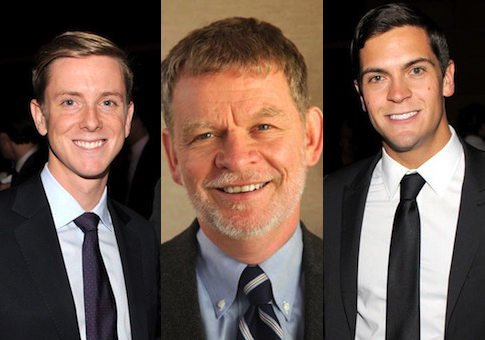The Democracy Alliance is aiming to massively increase its shadowy fundraising operation in the face of dissatisfaction by numerous individuals and organizations associated with the group, according to internal documents obtained by the Washington Free Beacon.
The documents detail nearly $70 million in financing in 2013 by individuals and organizations associated with the DA, more than double the previously reported totals.
Last year, that money financed a network of 132 left-wing groups, a progressive infrastructure far larger than 21 "aligned network" organizations previously reported as DA beneficiaries.
However, Democracy Alliance president Gara LaMarche is not satisfied with the scale of the organization’s fundraising apparatus.
In his prepared remarks at DA’s April conference in Chicago, a copy of which was obtained by the Free Beacon, LaMarche called on attendees to provide, through the DA, "the hundreds of millions of dollars that will be necessary to make a serious effort" to elect Democratic candidates and enact more liberal policies.
Those hundreds of millions of dollars would support, as the $70 million did last year, a network of as many as 180 left-wing organizations listed on a "progressive infrastructure map" provided to DA "partners" at the April conference.
It is not known which of those groups received money by virtue of Democracy Alliance fundraising efforts, since the group will not disclose information about its operations.
DA partners pay $30,000 in dues annually and are required to contribute at least $200,000 to Alliance-backed groups. While previous reporting had focused only on the group’s 21 "aligned network" organizations, LaMarche’s remarks confirm that donations to every group on the infrastructure map count towards a partner’s giving requirements.
That means that the network of organizations supported by the Democracy Alliance is potentially eight times as large as previously thought.
According to a chart in the slideshow that accompanied LaMarche’s remarks, the DA in 2012 facilitated more than $90 million in contributions to 134 groups—19 in the aligned network and 115 on the infrastructure map—and more than $69 million to 153 groups last year.
The group’s 2012 fundraising was a record—its previous high had been $52 million raised—but the decline in 2013 may portend internal problems at DA. According to LaMarche, a number of current and former partners have expressed dissatisfaction with the direction of the organization.
"Some former partners had the perception we were not sufficiently independent of the Democratic Party or the White House, or failed to take a long enough view of infrastructure and power-building beyond the next election cycle," LaMarche wrote in a June 5 form letter to former DA partners urging them to take another look at the group’s efforts.
That admission likely referred to the 2012 purge of a number of prominent left-wing organizations from DA’s portfolio of supported groups, which some described as an effort to more closely align the group with Democratic political leaders.
The group has also seen more recent retention problems among its partners. According to internal documents dated April 24 and posted on Tuesday by the website Powerline, a number of partners have recently been dropped or are at risk of ending or downscaling their relationship.
Most noteworthy is Sean Eldridge, a Democratic congressional candidate in New York. His husband, Chris Hughes—the brains behind Facebook's "poke button" and the editor of the New Republic—was named as a partner last year, but Eldridge himself was not.
According to the documents, they have "indicated that they are unlikely to renew their membership in 2014" but "have indicated that they would like to return to the DA at a later date."
Two DA partners have dropped out entirely. Art dealer Ronald Feldman and manufacturing executive Donald Budinger were both dropped from the DA partner list this year.
Three other partners—former investment banker and U.S. ambassador to Germany Phil Murphy, tech entrepreneur Tim Gill, and Steve Cohen, whose professional associations are not clear—are at risk of ceasing their involvement with the DA.
Facing these departures, the Alliance is hoping to recruit 16 new partners by the end of the year.
LaMarche’s effort to bring past DA partners back into the fold comes as current DA donors are floating concerns about the organization’s scope and direction.
Among existing partners, LaMarche said in his April presentation, there "is a sense … that we have become a bit stalled. … We haven’t grown enough as a partnership to keep pace with the challenges before us."
In addition to dramatically increasing DA fundraising, LaMarche proposed a revamped structure for the organization that would aim to foster more collaboration among its supported organizations.
